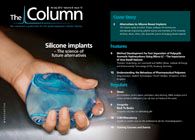Live Lab tour review
After five weeks and visits to ten science centre zones across Europe, Merck Millipore has completed its Live Lab tour in June in Martinsried, near Munich, Germany.
After five weeks and visits to ten science centre zones across Europe, Merck Millipore has completed its Live Lab tour in June in Martinsried, near Munich, Germany.
The company’s Live Lab exhibition started its journey in London in mid-May with visits to University College London and Imperial College London. The Live Lab then took to the highway, winding its way to two other UK venues in Oxford and Newcastle, before continuing on to continental Europe for visits to sites in the Netherlands, Belgium, France, Italy and Germany.
The Live Lab was designed to bring information about new technologies right to the workplace, and to save time for scientists whose busy schedules don’t allow for off-site visits. Live Lab visitors were invited to get “hands-on” experience with the Merck Millipore products in each of the labs and to test how they actually worked.
Sophie Pruvost, Merck Millipore Lab Water Market Communication Manager, and coordinator of the Live Lab Tour, commented, “Visitors to the Live Lab were impressed with the novel and modern exhibition space, and were interested in seeing so many of our products up close and all together. For example, our Lab Water purification systems were set up for real operation, with connections to a tap water supply right onboard the motor coach. It was a real advantage to have working systems right on hand to illustrate just how efficient and flexible this equipment is.”
Keltoum Benchikh, Director – Head of Global Marketing Communications Lab Water, said, “At each stop, visitors were also able to benefit from one-on-one meetings with Merck Millipore experts. As well as presenting information about our products in the easiest, most accessible manner possible, we also wanted to give Live Lab visitors the opportunity to discuss their specific situations with our application specialists during their visit, and to find out the best ways to optimize protocols or improve laboratory work flows. We had a good turnout, and we are very pleased with the results of the Live Lab Tour.”For more information please visit www.merckmillipore.comThis story originally appeared in The Column. Click here to view that issue.

New TRC Facility Accelerates Innovation and Delivery
April 25th 2025We’ve expanded our capabilities with a state-of-the-art, 200,000 sq ft TRC facility in Toronto, completed in 2024 and staffed by over 100 PhD- and MSc-level scientists. This investment enables the development of more innovative compounds, a broader catalogue and custom offering, and streamlined operations for faster delivery. • Our extensive range of over 100,000 high-quality research chemicals—including APIs, metabolites, and impurities in both native and stable isotope-labelled forms—provides essential tools for uncovering molecular disease mechanisms and exploring new opportunities for therapeutic intervention.
New Guide: Characterising Impurity Standards – What Defines “Good Enough?”
April 25th 2025Impurity reference standards (IRSs) are essential for accurately identifying and quantifying impurities in pharmaceutical development and manufacturing. Yet, with limited regulatory guidance on how much characterisation is truly required for different applications, selecting the right standard can be challenging. To help, LGC has developed a new interactive multimedia guide, packed with expert insights to support your decision-making and give you greater confidence when choosing the right IRS for your specific needs.

.png&w=3840&q=75)

.png&w=3840&q=75)



.png&w=3840&q=75)



.png&w=3840&q=75)










